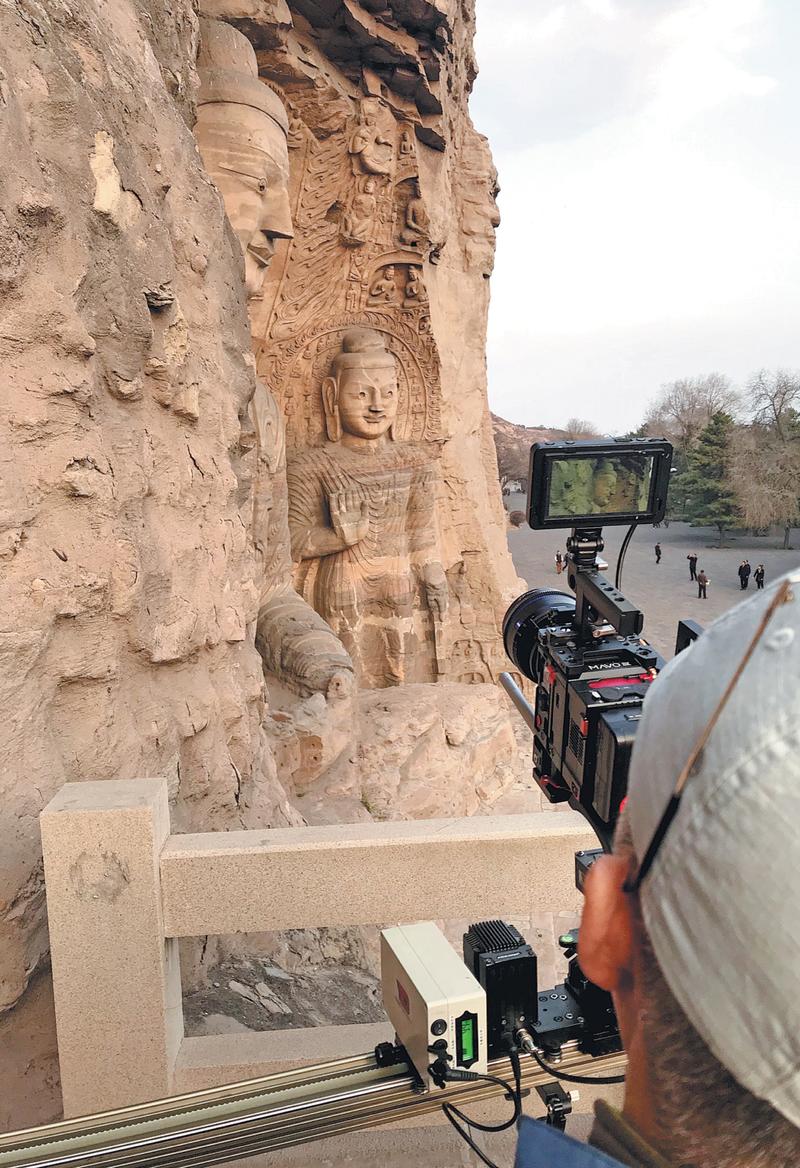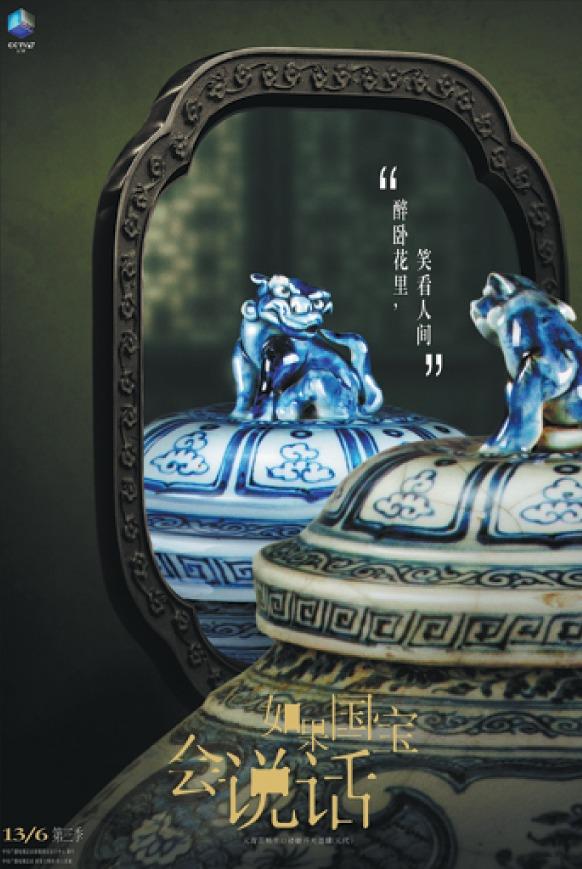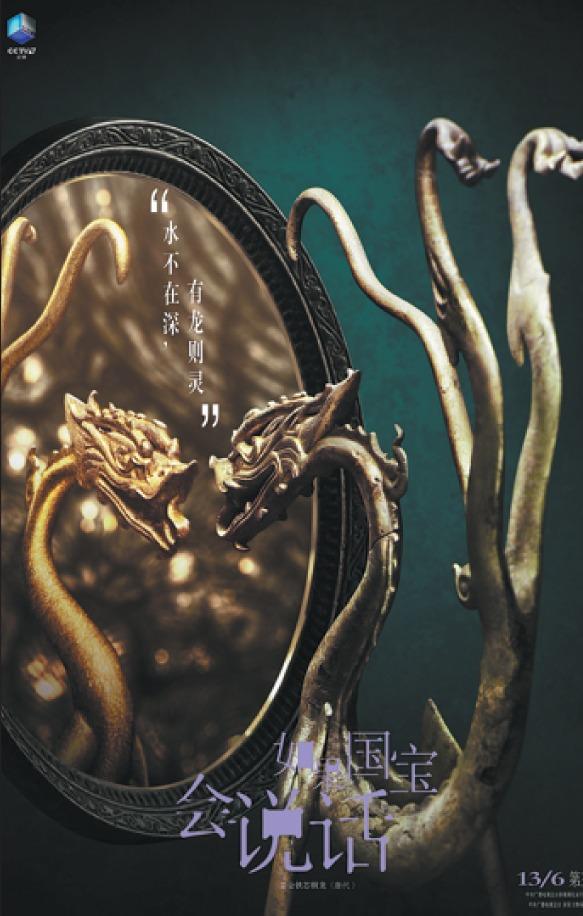 The production team of the documentary series If Treasures Could Talk films at the Yungang Grottoes in Datong, Shanxi province. (PHOTO PROVIDED TO CHINA DAILY)
The production team of the documentary series If Treasures Could Talk films at the Yungang Grottoes in Datong, Shanxi province. (PHOTO PROVIDED TO CHINA DAILY)
First released in 2018, the highly acclaimed history-themed documentary series If Treasures Could Talk has become one of the most anticipated programs of the summer, helping viewers to understand the brilliance of Chinese civilization in a lighthearted way.
Season 3 of the documentary premiered on June 13-annual Cultural and Natural Heritage Day-on China Central Television's documentary channel, as well as major streaming sites such as Tencent Video and Bilibili.
The new season of the documentary series If Treasures Could Talk features artifacts from the collections of 18 museums across the country, some of which can be traced back to the third century
Each of the 5 minute-long 25 episodes introduces and focuses on one article of cultural heritage, and the latest season has garnered as much praise as the previous two.
The new season features artifacts from the collections of 18 museums across the country, some of which can be traced back to the third century, when China began a period of frequent turbulence and the simultaneous rise of emerging states-an era, however, that was fertile for the arts and saw culture flourish, which was given a boost by exchanges between different ethnicities. The show continues on through the extravagant era of the Tang Dynasty (618-907) during which a unified empire ushered in one of the most powerful and prosperous periods in the nation's history.
ALSO READ: History in bite-sized morsels
Xu Huan, the documentary's chief director, says it was a time when humanistic awareness was awakened and arts and culture boomed, and it was also a period when Chinese society became more inclusive and diversified. She says the new episodes not only cover the lifestyles of scholar-officials of the Wei (220-265) and Jin (265-420) dynasties along with the imposing strength of the Tang Dynasty, which people are familiar with, but they also shed more light on the physical evidence of the development of the various periods' manufacturing, engineering, legal systems and export industries.
 A poster of the third season of the documentary, If Treasures Could Talk, featuring a porcelain item. (PHOTO PROVIDED TO CHINA DAILY)
A poster of the third season of the documentary, If Treasures Could Talk, featuring a porcelain item. (PHOTO PROVIDED TO CHINA DAILY)
Making the documentary took the production team to museums, archaeological institutions and relic sites around the country, where they filmed hundreds of artifacts. And the crew, aided by modern postproduction techniques and the incorporation of contemporary language, are able to connect the past with the present, while imparting lots of information and engaging viewers.
One episode, for example, features Tang pottery figures and official documents that were excavated from the Astana Tombs and are currently on show at the Xinjiang Museum in Urumqi.
The Astana Tombs form an ancient cemetery site where aristocrats, officials and commons of different ethnic groups living in the nearby ancient city of Gaochang were buried between the third and eighth centuries. Since the late 1950s, some 456 tombs and 10,000 valuable relics have been unearthed in an area covering some 10 square kilometers, thus being hailed by historians as an underground museum.
The episode features an animation in which the pottery figures come to life, shop at a street fair and gossip about a dispute between two businessmen being taken to the local court, providing people a more immersive perspective of the lifestyle, the boom in commerce and how laws were applied in Gaochang, an important trading post along the ancient Silk Road.
Another episode centers around a patterned Tang brocade kept at the China National Silk Museum in Hangzhou, Zhejiang province. It provides a glimpse into the ancient weavers' mind to show how they chose and arranged the patterns of plants and animals to lead the trend of the time.
 Another poster of the third season of the documentary, If Treasures Could Talk, featuring a gold dragon. (PHOTO PROVIDED TO CHINA DAILY)
Another poster of the third season of the documentary, If Treasures Could Talk, featuring a gold dragon. (PHOTO PROVIDED TO CHINA DAILY)
The background music for this particular episode is blended with the sounds of typing on keyboard which, according to the documentary's sound director Wang Tong, is a tribute from modern-day technicians to the wisdom of craftsmanship from centuries ago.
The documentary's creative promotional posters have also helped the show gain popularity, as people post and repost them across social media. The posters for season 3 show the artifacts looking at their reflections in a mirror, seemingly lost in deep thought.
ALSO READ: China's changes through reform on documentary
"After they were made, these objects were transferred from one owner to another who kept them as a family inheritance. At some point they were buried underground and gradually, they faded from memory," Huang Hai, the designer of the posters, notes.
"Then, one day they get dug up and sent to museums to become national treasures, viewed from a distance."
He believes that the production will communicate, and help people of today to hear and understand, the "inner desire" of the artifacts.
Contact the writer at linqi@chinadaily.com.cn


